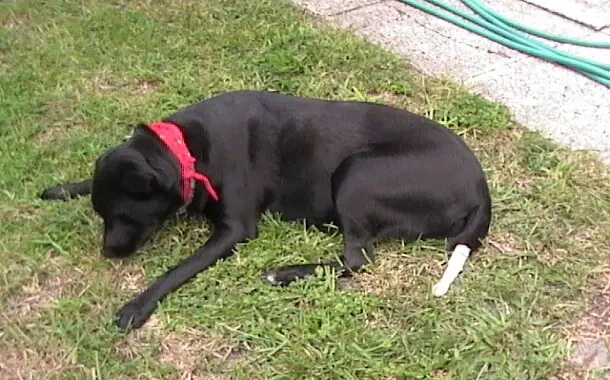How Much Does Dog Tail Amputation Cost?
A dog’s tail is more than an odd protrusion—it’s an extension of the spine that’s loaded with nerves and blood vessels. However, the blood flow to this part of the body is not that great, and the lack of clotting ability can cause the tail wound to bleed for a long time. This problem can be further aggravated if the dog continuously bites and gnaws at the bleeding cut or wound.
A tail that causes the animal great pain, that cannot be used, or that has suffered a wound or fracture that cannot be healed will generally be amputated. Amputation can be a recommended solution in cases of cancer, severe trauma, or congenital defects that make the dog’s tail non-functional.
How Much Does a Dog Tail Amputation Cost?
There are several factors that affect the cost of a dog tail amputation, such as the geographical location, the extent of the injury, whether it is a full or partial amputation, the vet’s office, the length of the stay, and the inclusions to the bill. The average cost of this procedure would start at around $360 for a partial amputation and go up to almost $1,200 for a full amputation.
According to the members of the online forum Grey Talk, you should expect to pay anywhere between $190 and $700 for a dog’s tail partial amputation.
On the online forum Just Answer, a certified tech said that the price of this procedure would vary by state, and mentioned that at her clinic you would have to pay around $650 for a dog’s tail amputation.
Dog tail amputation – short presentation
The amputation is performed on the recommendation of the veterinarian, who will also perform a series of analyses beforehand, which differ depending on the reason for the amputation and the general state of the animal’s health. In general, these tests are blood tests, to evaluate the general state of health and X-rays of the affected area to eliminate the possibility of a tumor.
In general, this procedure is performed at a vet’s office and requires general anesthesia, plus an overnight stay. Before the surgery, the amputation site is cleaned by clipping the hair around and scrubbing the area around with a sanitizer.
You might also like our articles on the cost of tail docking, x-rays, or ear hematoma surgery for a dog.
Then the surgeon will make a skin incision, dissect the muscle and transect the bones to repair the tissue that was affected. Finally, the vet will suture the dog’s skin and apply a bandage/dressing to prevent infection and the animal from licking at the amputation site. No bandage would be needed if the entire tail is amputated. For the following few weeks, your dog will have to wear a cone until the vet removes the suture.
In most cases, the procedure itself takes about 10 to 40 minutes, including the time required for preparation and anesthesia.
Which are the additional expenses?
 Depending on the billing policy of the vet’s office, usually, pre-operative exams, X-rays, and bloodwork can be a separate bill.
Depending on the billing policy of the vet’s office, usually, pre-operative exams, X-rays, and bloodwork can be a separate bill.
Oral pain medications, sedatives, antibiotics, anti-inflammatories, joint supplements, vitamins, minerals, and other items may be prescribed by your veterinarian to help your dog heal. Expect to spend $45 to $60 on these.
Also, within fourteen days or so, you will have to take your dog to the vet’s cabinet for a follow-up visit to have their sutures removed and the doctor to evaluate the incision site to make sure that there are no infections. At some vet offices, the cost of this follow-up visit is included in their quotes, while at others this may be charged separately.
Important things to consider
The main immediate advantage of amputation is the fact that it provides the animal with relief from the great pain associated with various ailments. There are post-operative pains, as after any intrusive surgery, but these are generally temporary and of a much lower intensity than those caused by cancer or a strong trauma.
Following the surgery, complications may occur such as local contusions, a liquid secreted near the incision site, local infections, or hemorrhages.
Applying cold compresses to swollen and inflamed incisions can help reduce pain. Once the swelling and inflammation go down, heat can be used to encourage healing by increasing blood flow to the incision.
Tips for saving money
Even if you are loyal to one vet, you should call around and ask for a price offer from the local vet offices. If you are lucky enough, you may find a vet clinic that charges less than your vet.


Leave a Reply
Want to join the discussion?Feel free to contribute!